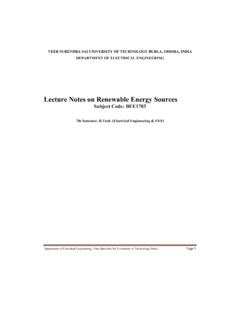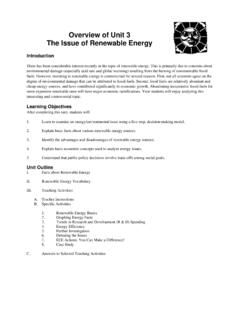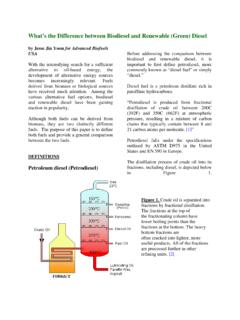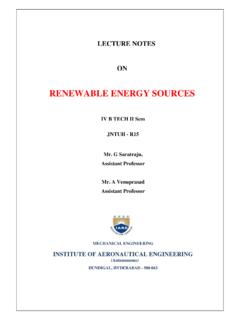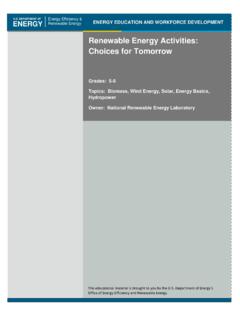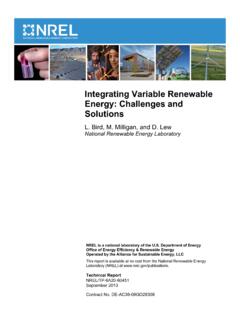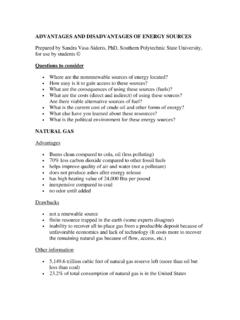Renewable Sources
Found 9 free book(s)Lecture Notes on Renewable Energy Sources
vssut.ac.inand Non-Renewable Energy energy obtained from sources that are r, solar power, geothermal ene The most important feature of renewable ene the release of harmful pollutants. rgy is the conventional fossil fuels such as coal, oil and gas, which are time. Figure 1.2 Renewable and Non-Renewable-conventional energy resources:
Overview of Unit 3 The Issue of Renewable Energy
www.aps.edudevelopment of renewable energy sources such as, solar power, wind, geothermal, and biomass. In the late 1980s, however, the national commitment to renewable energy waned as the price of oil plummeted. Neither the government, nor consumers, were willing to invest in more costly renewable energy sources and programs when nonrenewable
What’s the Difference between Biodiesel and Renewable ...
www.advancedbiofuelsusa.infoMar 11, 2011 · Renewable (Green) Diesel Renewable Diesel, often called “green diesel” or “second generation diesel,” refers to petrodiesel-like fuels derived from biological sources that are chemically not esters and thus distinct from biodiesel. Renewable diesel is chemically the same as petrodiesel, but it is made of recently living
Science Projects in Renewable Energy and Energy Efficiency
www.nrel.govRenewable energy technologies are clean sources of energy that have a much lower environmental impact than conventional energy technologies. Importing energy is costly, but most renewable energy investments are spent on local materials and workmanship to build and maintain the facilities. Renewable energy investments are
RENEWABLE ENERGY SOURCES - Institute of Aeronautical ...
www.iare.ac.inRenewable and Non-Renewableenergy Conventional and Non-conventionalenergy 1.1 Primary and SecondaryEnergy Fig1.1. Major Primary and Secondary sources Primary energy sources are those that are either found or stored in nature. Common primary energy sources are coal, oil, natural gas, and biomass (such as wood).
Renewable Energy Activities: Choices for Tomorrow
www.energy.govThe practical sources of energy include the fossil fuels, natural gas, petroleum (or oil), and coal. Fossil fuels are referred to as nonrenewable energy sources because, once used, they are gone. Scientists are exploring the practicality of other sources called renewable energy sources.
Renewable and Nonrenewable Resources
www.whsd.netonly renewable but inexhaustible. d. Sun– light from the sun supports all the life on Earth as we know it. Also considered inexhaustible. (at least for the next 5 billion years) e. Water– constantly renewed/replenished by the water cycle. However, fresh water resources are somewhat limited. The use and quality of water must be carefully ...
Integrating Variable Renewable Energy: Challenges and ...
www.nrel.govrenewable energy integration challenges and mitigation strategies that have been implemented in the U.S. and internationally including: forecasting, demand response, flexible generation, larger balancing areas or balancing area cooperation, and operational practices such as fast scheduling
ADVANTAGES AND DISADVANTAGES OF ENERGY SOURCES
homepages.spa.umn.eduWIND POWER Advantages • Continuous sources of energy • Clean source of energy • No emissions into the atmosphere • Does not add to thermal burden of the earth • Produces no health-damaging air pollution or acid rain • Land can be sued to produce energy and grow crops simultaneously • Economical • Benefits local communities (jobs, revenue)
